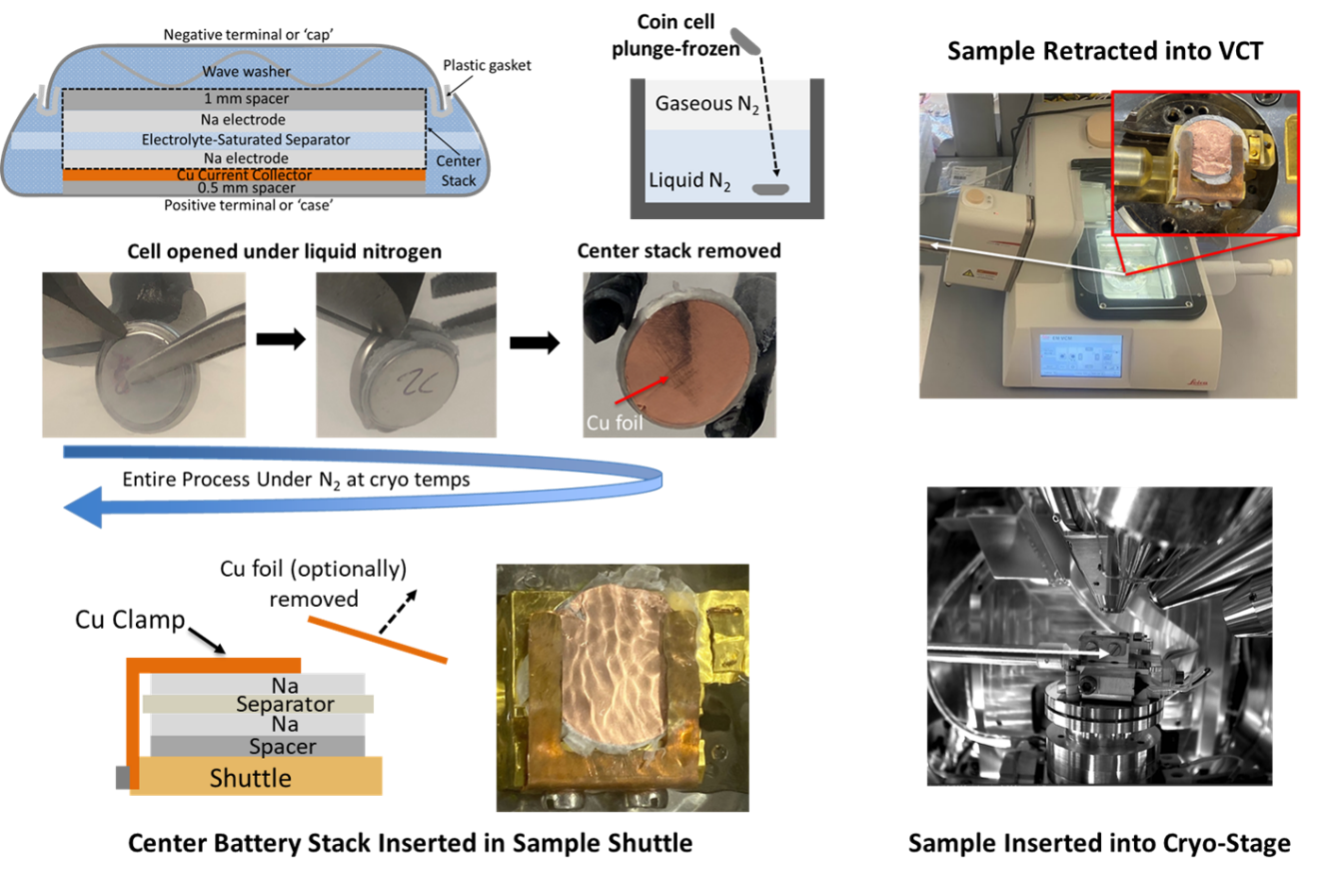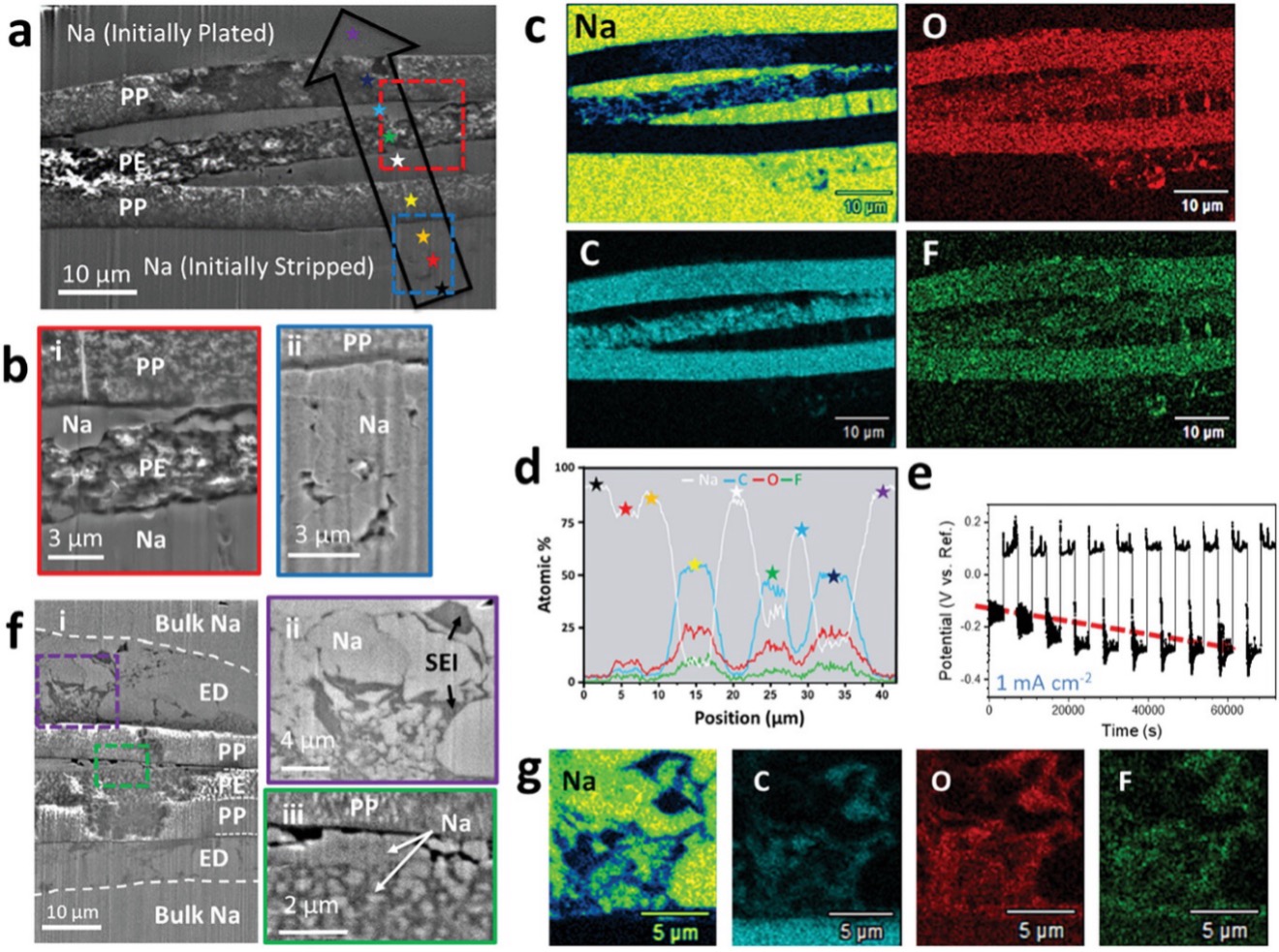A collaborative team of researchers from the Warner group and Guihua Yu Group at the University of Texas at Austin have developed a new workflow for cryogenic electron microscopy (cryo-EM) characterization of battery materials that has paved the way for new insights into a degradation mechanism of sodium metal batteries, recently published in Advanced Materials.
This process involves using cryogenic focused ion beam milling (cryo-FIB) to mill through entire battery samples allowing a cross-sectional view of the cell with unprecedented detail.
The graduate student leading the project, Kevin Matthews, explains “The challenge of characterizing battery materials is that much of the important information is contained within buried interfaces that are not easily accessible without deconstructing the cells, undoubtedly altering the true structure of these interfaces.” Further, many batteries use liquid electrolytes which are not typically compatible with the high vacuum environment present in many characterization instruments. By using a suite of cryogenic sample preparation and transfer equipment, entire intact batteries can be frozen with liquid nitrogen, allowing the liquid:solid interfaces to be preserved.
While cryo-FIB has been used to study battery materials before, the novelty of this study comes from leaving the cell intact and preserving the true intrinsic nature of the devices. Normally, the cells are opened at room temperature and the electrode of interest is extracted from the cell, optionally rinsed in solvent to remove excess electrolyte, and transferred for characterization. In this study, the entire cell was frozen, and the electrode:separator:electrode stack was left intact as seen in Figure 1.

By keeping the electrode:separator:electrode stack intact, the interfaces contained within could be directly investigated. The most exciting finding was that sodium metal infiltrated the porous polymer separator, leading to delamination of the separator layers and eventual short-circuiting and failure of the cell. Previously, it was believed that short-circuits were caused by discrete dendrites forcefully penetrating the separator membrane. As seen in Figure 2, Na metal is found both accumulated between the separator layers as well as within the pores of the separator.

The study goes on to show that the solid electrolyte interphase (SEI) likely serves a crucial role in preventing Na from infiltrating the separator. The researchers plan to expand this characterization technique to other cell configurations. By varying the electrolyte, separator, and/or electrodes, they hope to better understand how these each effect degradation and failure mechanisms.

